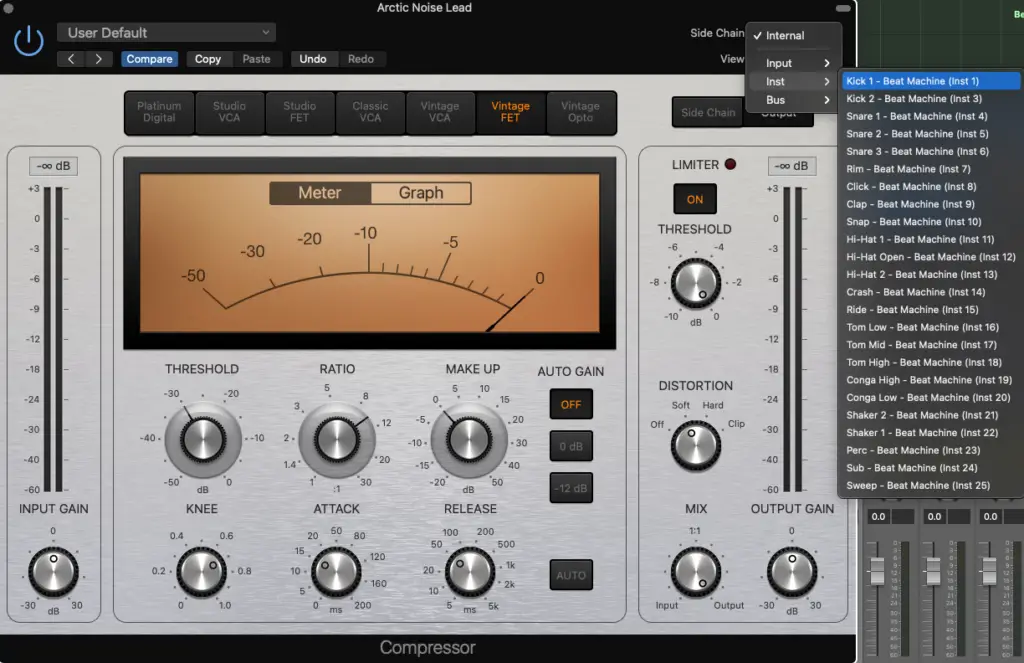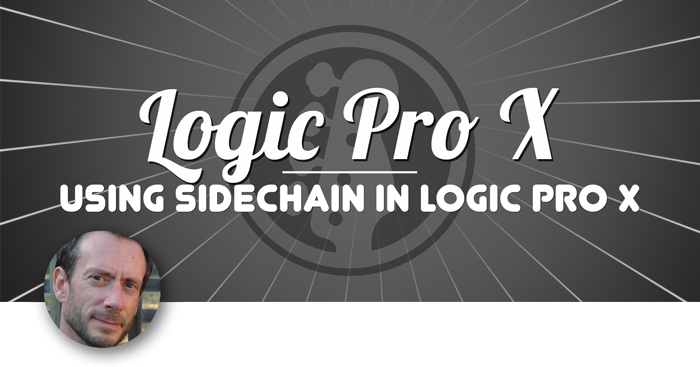

Now, I don't actually want Ultrabeat's output to be audible, I just want to use it as a sidechain source so the audio it generates isn't that important though you'll want decay times to be roughly equivalent to what you have in your audio. So, I'll need to use the MIDI to generate some audio - in this case I'm simply going to use the default patch that loads with Logic's Ultrabeat drum synth. To do this, I'm going to employ the drum loop's MIDI file equivalent - however, as we know, a MIDI file doesn't store any actual audio information, only the locations of note events across the piano roll. I want much more control over the signal acting as the sidechain input so I can decide exactly when the compressor is going to act and when not.

It's quite tricky to hear the effect, other than an overall reduction in volume.

The most obvious method you could adopt here is to simply throw the entire audio signal of 'Automatic_90_Drums01' into the sidechain input of a compressor loaded on the keys and guitar channels - however, this will compress both parts whenever any part of the drum loop is playing, so in this case, almost constantly over the course of the 4 bars: I've put together a quick mix and here's how they sound together: I've dragged the drums and melodic parts of the 'Automatic' set of loops from String Theory into Logic Pro X and am going to use the drum pattern to sidechain compress both the rhodes keys and one of the guitar loops. Let's begin with some sidechain compression. In ModeAudio loop releases, we give you both the audio and the exact MIDI used to generate it but you can always construct your own MIDI files to use for the purposes I'll describe below - this will be easier or harder depending on the complexity of the pattern you want to copy of course.įor this tutorial I'm going to assume you have both an audio and MIDI file version of your loop - I'm going to use a drum loop from String Theory - Hip Hop Guitars & Beats along with Logic Pro X's internal plugins but you can of course extend the following ideas out to any given musical material or DAW. Having both an audio and MIDI version of a given loop is incredibly handy as we'll see, as it allows you to use the same material for different purposes at the same time as well as giving you the ability to tweak the pattern stored in the MIDI loop at any point. In this article I want to share a nifty trick for using MIDI as the source input for sidechain compression and filtering, working with loops and their MIDI equivalents as they're found in all ModeAudio loop packs. Welcome back to my tutorial series exploring all the power and flexibility of the humble MIDI file.


 0 kommentar(er)
0 kommentar(er)
